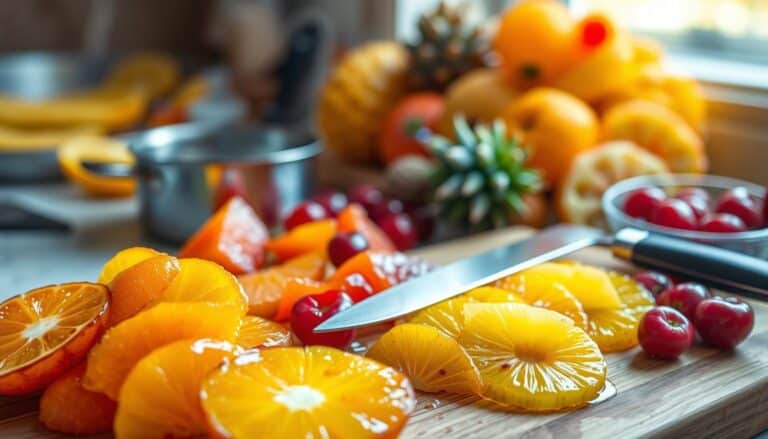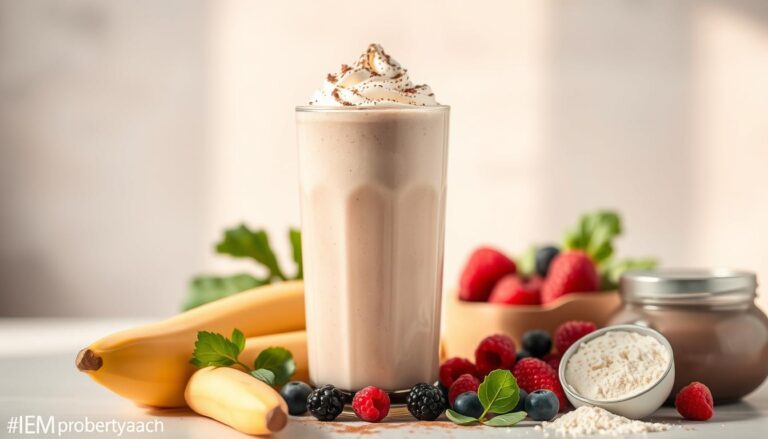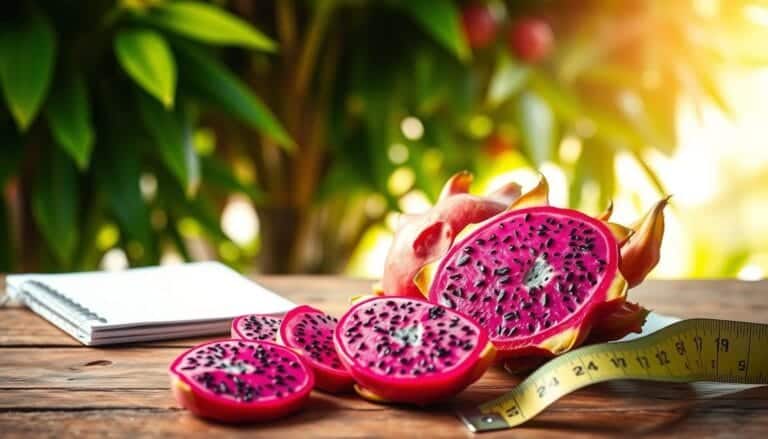Tisane: How To Make A Relaxing Cup In 3 Steps
Explore the calming world of tisanes, your go-to herbal tea for unwinding. Unlike regular tea, tisanes are caffeine-free. They’re made from fruits, flowers, and herbs, offering a gentle way to find peace.
Making a soothing tea is easy. Just follow three simple steps to turn loose herbs into a comforting drink. It calms your mind and relaxes your senses. Whether you need stress relief or a calming bedtime drink, tisanes are a natural choice.
These herbal teas have a long history, used for treating ailments like upset stomachs, inflammation, and insomnia. Now, they’re enjoyed as delightful drinks that support wellness. They offer a peaceful break in your busy day.
Key Takeaways
- Tisanes are caffeine-free herbal infusions
- Easy to prepare with just three steps
- Supports relaxation and wellness naturally
- Can be made from various fruits, flowers, and herbs
- No bitter taste like traditional tea
What Is Tisane and Why It’s Perfect for Relaxation

Looking for a drink that helps you relax? A tisane might be just what you need. Unlike regular tea, this caffeine-free option offers a natural way to unwind.
Understanding the Difference Between Tea and Tisane
Traditional tea comes from the Camellia sinensis plant, with caffeine and L-theanine. Tisanes, on the other hand, are made from various herbs, flowers, fruits, and spices. They offer a calm drink without any caffeine.
- Tisanes use herbs, flowers, fruits, and spices
- Zero caffeine content
- Purely botanical ingredients
- Versatile flavor profiles
The History of Tisanes as Medicinal Remedies
Tisanes have been more than just a drink for centuries. Ancient cultures saw them as strong healing tools. Monasteries, traditional healers, and indigenous groups shared their herbal wisdom for generations.
| Cultural Origin | Tisane Use | Primary Purpose |
|---|---|---|
| Egyptian | Herbal Remedies | Medicinal Treatment |
| Chinese | Wellness Practices | Holistic Healing |
| European Monasteries | Healing Preparations | Health Maintenance |
Learning about tisanes’ history and special qualities can change your drink time into a moment of calm and wellness.
The Best Herbal Ingredients for a Calming Tisane
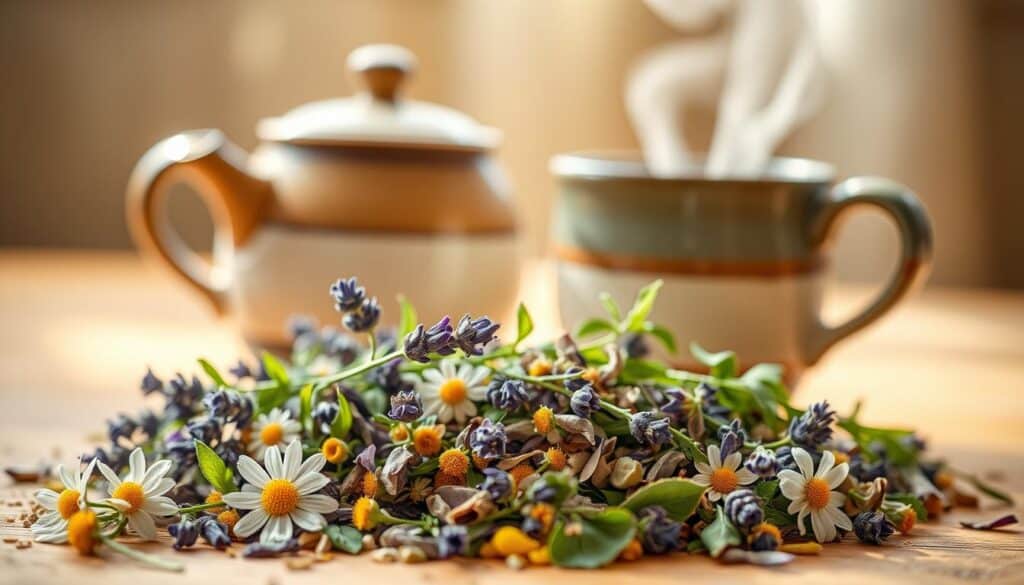
Discovering the right calming herbs can turn your stress relief tea into a powerful tool. Each herb has special properties that calm your mind and body. They offer a gentle way to handle daily stress.
Starting your journey to natural relaxation means learning about the best herbal ingredients. These botanical wonders work together to support your well-being:
- Chamomile: Contains apigenin, a compound that binds to brain receptors and promotes calmness
- Lavender: Reduces anxiety and helps quiet racing thoughts
- Lemon Balm: Calms the nervous system and improves mood
- Peppermint: Relieves muscle tension and supports digestive comfort
- Valerian Root: Provides natural sedative properties for better sleep
- Tulsi (Holy Basil): An adaptogen that helps your body manage stress more effectively
When making your stress relief tea, remember these herbs are more than just flavors. They are natural remedies that interact with your body’s stress response. Each herb has a unique way to help you relax, whether by improving sleep, reducing anxiety, or helping you cope with tough situations.
You don’t need to be an herbal expert to enjoy these natural ingredients. Start exploring these remarkable botanicals. Discover how they can help you find inner peace and tranquility.
Chamomile: Your Go-To Herb for Evening Relaxation
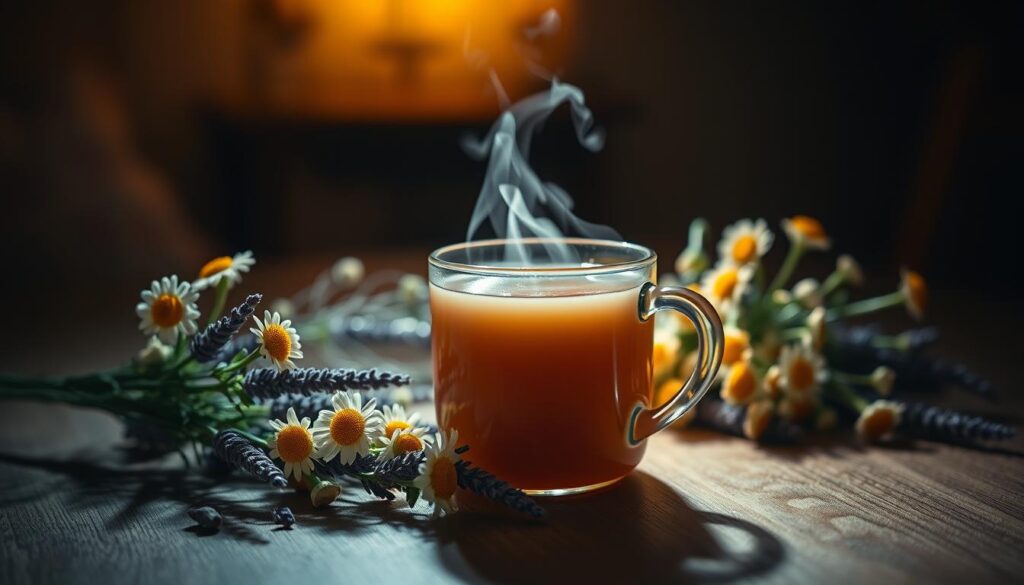
Explore the enchanting world of chamomile tea, a natural sleep aid. For centuries, it has been a trusted way to relax and get ready for sleep. It’s not just a tasty drink; it’s a natural solution for a better evening.
Chamomile’s calming effects come from a compound called apigenin. This ingredient connects with your brain, bringing calm and reducing anxiety. It helps you relax and sleep better.
How Chamomile Supports Your Nervous System
Drinking chamomile tea is a calming technique. The apigenin in it works with your brain, helping to:
- Reduce stress and anxiety
- Promote better sleep quality
- Calm racing thoughts
- Support overall mental relaxation
Brewing the Perfect Chamomile Bedtime Tea
Making the perfect chamomile tea is easy. Heat water to 200°F to get the most benefits without harming the flowers. Steep for 3-5 minutes to capture all the soothing qualities.
Pro tip: For a more relaxing night, drink your chamomile tea 30 minutes before bed. It helps your body and mind get ready for sleep.
Lavender and Lemon Balm: Floral Notes for Stress Relief
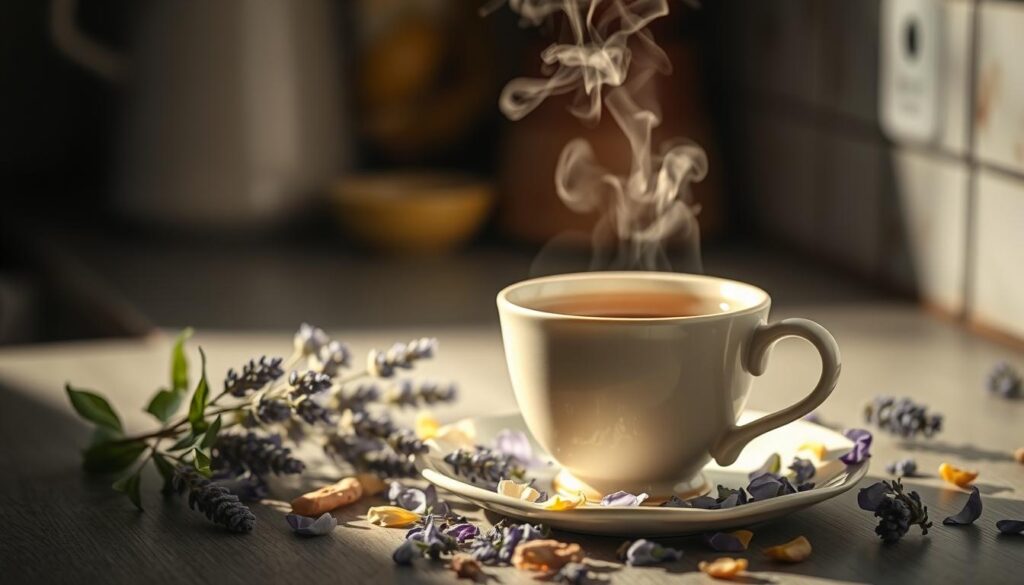
Lavender tea and lemon balm are great for natural stress relief. They offer a calming escape from daily worries. Your tea time becomes a moment of deep relaxation.
Lavender tea is known for calming nerves. Its floral scent works on your nervous system. It helps reduce anxiety and brings peace to your mind.
- Reduces stress and emotional tension
- Improves sleep quality
- Supports overall mental well-being
Lemon balm, part of the mint family, adds to lavender’s calming effects. It has been used for centuries to calm thoughts and balance emotions. Its citrusy taste makes it a joy to drink.
| Herb | Benefits | Best Time to Drink |
|---|---|---|
| Lavender | Reduces anxiety, improves sleep | Evening |
| Lemon Balm | Calms nervous system, reduces stress | Afternoon or Evening |
Try mixing lavender and lemon balm for a stress-relief blend. A simple mix can make your evening peaceful and restorative. Everyone reacts differently to herbs, so listen to your body and enjoy the journey to calmness.
Step One: Choose Your Relaxing Tisane Blend
Starting your tisane recipe journey means picking the right herbs. You’ll learn how to make tisane by choosing the best ingredients for your herbal tea.
Decide between single herbs or blended tisanes. Each has its own benefits for relaxation.
Selecting Single Herbs vs. Blended Tisanes
Single herb tisanes give a pure taste. They let you:
- Know each herb’s unique qualities
- Find the best herbs for your body
- Get better at tasting herbal flavors
Blended tisanes mix herbs for a richer taste. They combine herbs for:
- Deeper relaxation effects
- More complex flavors
- Well-balanced herbal mixes
How Much Tisane to Use Per Cup
The right amount of tisane is simple. Use 1.5-2 teaspoons of dried herbs for an 8-ounce cup of water. This ensures the best flavor.
| Herb Type | Amount per Cup | Steeping Time |
|---|---|---|
| Dried Leaves | 1.5-2 teaspoons | 5-7 minutes |
| Fresh Herbs | 2-3 teaspoons | 3-5 minutes |
Pro tip: Don’t stress about exact amounts. Adjust to your liking. Enjoy experimenting with your herbal tea blend!
Step Two: Heat Your Water to the Right Temperature
Brewing herbal tea is all about the right water temperature. Unlike traditional teas, tisanes are more forgiving. The best temperature for most herbal teas is around 200°F, just below boiling.
The temperature of your water is key to getting the most flavor and health benefits from your herbs. Hot water helps release the oils and compounds that make your tisane tasty and good for you.
- Boiling water (212°F): Acceptable for most tisanes
- Ideal temperature: 200°F
- Let boiling water rest 30-60 seconds before pouring
Some herbs might need a slightly different temperature. Here’s a quick guide to help you brew the perfect tisane:
| Herb Type | Recommended Water Temperature | Steeping Time |
|---|---|---|
| Chamomile | 200°F | 5-7 minutes |
| Peppermint | 212°F | 3-5 minutes |
| Lavender | 200°F | 4-6 minutes |
Don’t worry if your water temperature isn’t perfect. Tisanes are quite forgiving. Even if your water is a bit off, you’ll still make a wonderful and calming drink.
Pro tip: If you don’t have a temperature-controlled kettle, just boil water and let it cool for about 30 seconds. This will get you very close to the ideal temperature for most herbal teas.
Step Three: Steep Your Tisane for Maximum Flavor and Benefits
Making the perfect tisane is an art that lets you explore flavor and relaxation. Your steeping time can turn a simple herbal infusion into a delightful sensory experience. Unlike traditional tea, tisanes offer incredible flexibility in brewing tisane techniques.
Why Tisanes Can Steep Longer Than Traditional Tea
Tisanes are unique in their herbal tea preparation because they lack the tannins found in traditional tea leaves. This characteristic makes them remarkably forgiving during the steeping process. You can enjoy extended steeping times without worrying about bitter flavors.
- No tannin-based bitterness
- Rich in aromatic compounds
- Flexible brewing times
Adjusting Steep Time for Your Taste Preferences
Your personal taste guides the perfect steeping time. Most tisanes shine with a 5-7 minute steep, but feel free to experiment. Want a more intense flavor? Let it brew a bit longer. Prefer something lighter? Reduce the steeping time.
Here’s a quick guide to steeping time:
- Mild flavor: 3-5 minutes
- Medium intensity: 5-7 minutes
- Strong flavor: 7-10 minutes
Remember, tisane brewing is about your enjoyment. Trust your taste buds and create a cup that brings you comfort and relaxation.
Enhancing Your Tisane with Natural Add-Ins
Make your tisane recipe stand out with natural add-ins. These ingredients boost both taste and relaxation. Start by learning how certain ingredients can enhance your herbal tea’s flavor and health benefits.
Natural sweeteners are key to enjoying your tisane. Here are some great options:
- Honey: A classic natural sweetener with soothing properties
- Pure maple syrup for a rich, earthy sweetness
- Stevia leaves for a zero-calorie alternative
Spices and botanicals can also elevate your tisane. Try these:
- Cinnamon stick for warmth and blood sugar regulation
- Fresh lemon slices for bright citrus notes
- Vanilla extract to add depth and comfort
- A splash of steamed milk for a luxurious latte-like texture
Pro tip: Choose your add-ins wisely. Chamomile pairs well with honey and lemon. Rooibos-based tisanes are enhanced by vanilla and milk. Your tisane journey is all about exploring and finding new favorites.
Creating a Mindful Tea Ritual for Daily Relaxation
Turning your tea time into a special ritual can deeply relax your body and mind. It’s more than just drinking tea. It’s about finding peace in your busy day.
You don’t need to make it complicated. Just pick a cup that feels cozy to you. This small act tells your brain it’s time to slow down and enjoy the moment.
Crafting Your Personal Relaxation Moment
To make your tea time truly special, follow these steps:
- Choose a quiet spot away from distractions
- Turn off your phone and other devices
- Take three deep breaths before you drink
- Use all your senses while making your tea
The beauty of a tea ritual is in its simplicity. Feel the warmth of the cup, smell the steam, and enjoy each sip slowly. Even just five minutes can be enough to find peace.
Remember, your tea ritual is unique to you. There’s no right or wrong way to do it. Just let yourself find what calms you the most during your tea time.
Popular Relaxing Tisane Recipes to Try at Home
Are you ready to try some calming tisane recipes? These herbal tea blends are great for finding peace in your day. Whether you need a morning boost or a night-time calm, these recipes will be your new go-to wellness ritual.
Soothing Herbal Combinations
- Chamomile Lavender Dreamer: A classic relaxing tisane recipe that combines:
- 2 teaspoons dried chamomile flowers
- 1 teaspoon dried lavender
- Hot water
- Optional: Honey to taste
- Rooibos Tea Latte: A creamy herbal tea blend that soothes and comforts:
- 1 rooibos tea bag
- 1/2 cup warm milk
- 1/2 teaspoon vanilla extract
- Honey or cinnamon (optional)
Seasonal Tisane Variations
Enjoy your herbal tea hot or cold, depending on the season. In summer, try refreshing iced versions. In winter, warm up with comforting hot mugs.
| Recipe | Key Ingredients | Best Time to Drink |
|---|---|---|
| Lemon Balm Mint Cooler | Fresh lemon balm, mint leaves, honey | Afternoon stress relief |
| Vanilla Coconut Rooibos | Red rooibos, vanilla, shredded coconut | Evening relaxation |
| Blood Orange Ginger Fizz | Fruit tea, ginger, honey, lemon | Morning energizer |
These tisane recipes are just the beginning. Feel free to mix and match to create your own unique blends. The most important thing is to enjoy the journey and the calm moments these teas bring to your life.
Conclusion
You’ve learned how to make the perfect relaxing tisane. This simple wellness practice helps you find natural stress relief. Just a few steps can turn hot water and herbs into a calming drink.
Making a relaxing tisane is easy and doesn’t need special skills or fancy tools. You can pick from chamomile, lavender, or mix your own blend. The best part is, you can try different herbs to find what works best for you.
Your journey with tisanes is just starting. Begin with the herbs you’ve learned about and explore new ones. Each cup is a chance to take care of yourself and find peace in a busy day. Making a tisane is about caring for your mind and body with nature’s help.
See tisanes as a way to handle daily stress in a modern way. Your perfect cup of calm is waiting to change your evening routine, one sip at a time.
FAQ
What is the difference between a tisane and traditional tea?
Traditional tea comes from the Camellia sinensis plant. Tisanes, on the other hand, are herbal infusions without caffeine. They are made from herbs, flowers, fruits, and spices. Tisanes offer relaxation without the stimulating effects of tea.
How much dried herbs should I use per cup of tisane?
Use 1.5-2 teaspoons of dried herbs for an 8-ounce cup. This ensures you get the best flavor and benefits. You can adjust to your liking.
What is the ideal water temperature for brewing tisanes?
Use water around 200°F, just below boiling. This temperature brings out the best in your tisane without harming the herbs.
Can I over-steep a tisane?
Tisanes are very forgiving. You can steep them for 5-15 minutes without bitterness. This lets you customize your tisane’s strength.
Are tisanes safe for everyone to drink?
Most tisanes are safe, but check with a healthcare professional if you have health issues. Some herbs can interact with medications.
Can I make iced tisanes?
Yes! Many herbal blends are great as both hot and cold drinks. Just cool the tisane and pour it over ice. Mint and lemon balm are refreshing cold.
How long can I store dried herbs for making tisanes?
Dried herbs stay good for 6-12 months in a cool, dark place. Keep them away from sunlight, heat, and moisture.
Can I mix different herbs to create my own tisane blend?
Yes! Making your own blend is fun. Start by learning about each herb. Then, mix them to find the perfect flavor and relaxation.
What are some of the best herbs for relaxation?
Chamomile, lavender, lemon balm, and passionflower are great for calming. They help with sleep, anxiety, and stress.
Do I need special equipment to make tisanes?
No! You can make a great tisane with simple tools like a kettle, mug, and infuser. While special equipment is nice, it’s not needed.


